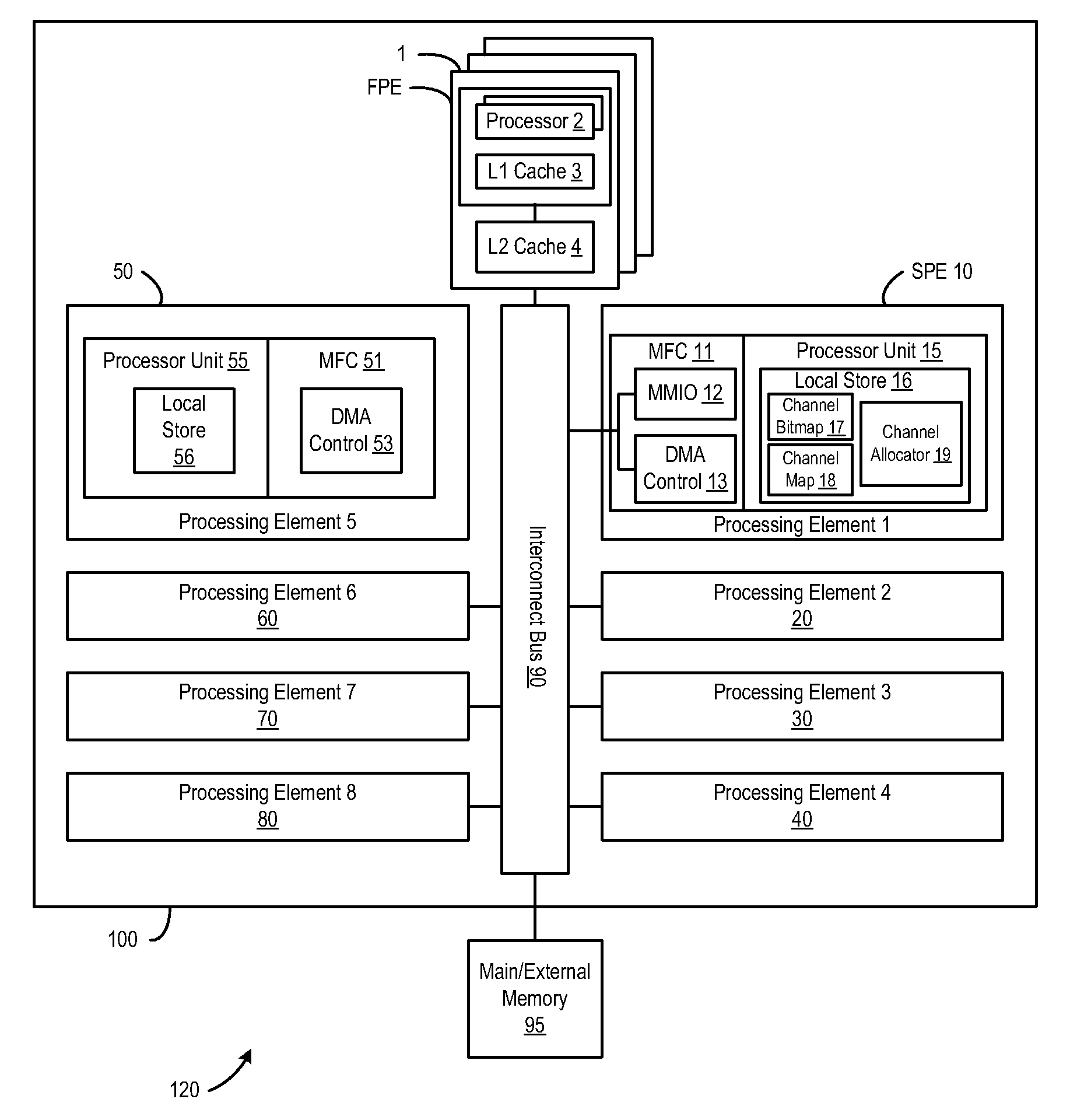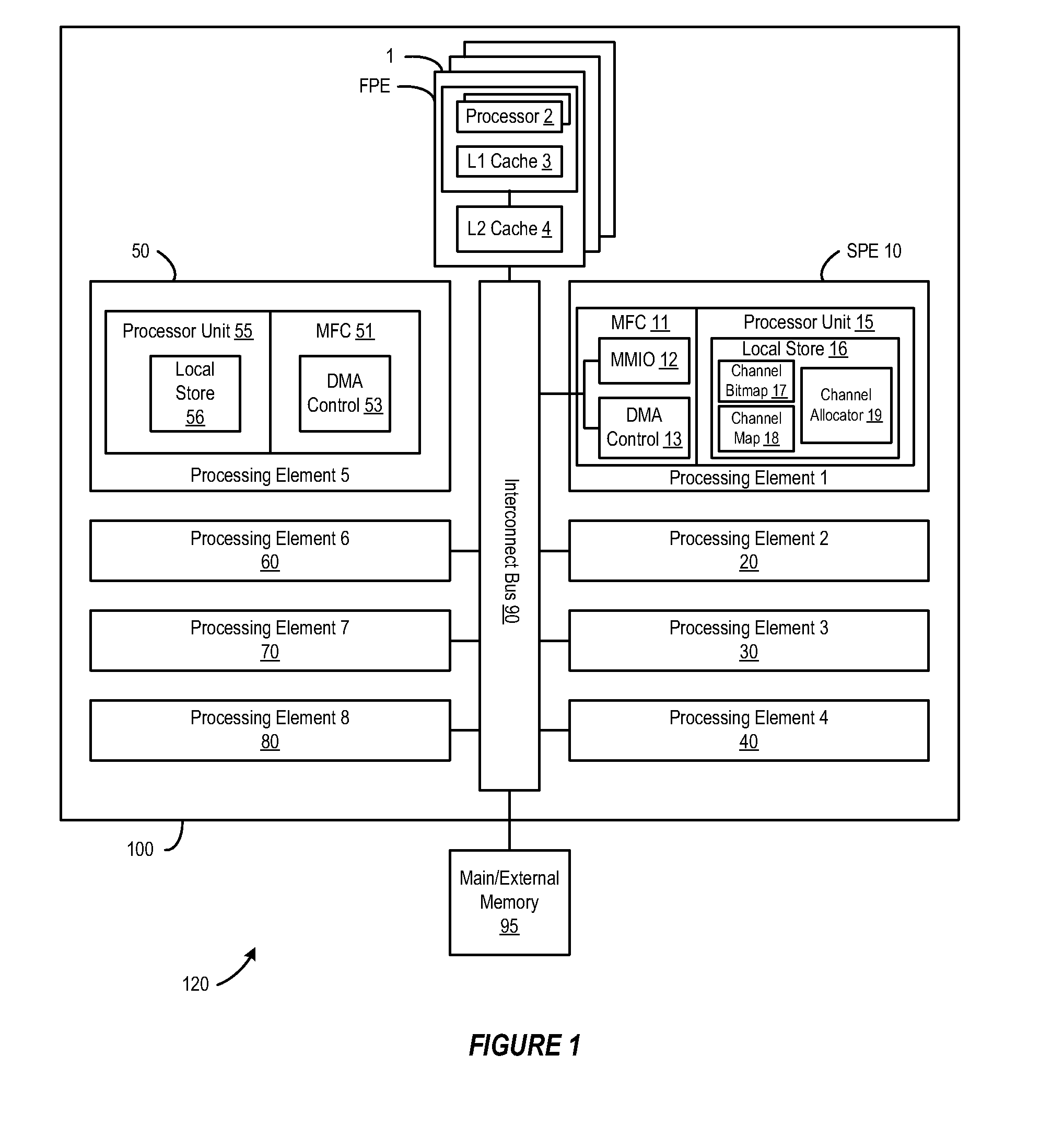Dynamic logical data channel assignment using time-grouped allocations
a dynamic logical and time-grouped technology, applied in the field of data processing systems, can solve problems such as performance degradation, and achieve the effects of reducing false dependencies for unrelated data transfers, efficient allocation, and improving performan
- Summary
- Abstract
- Description
- Claims
- Application Information
AI Technical Summary
Benefits of technology
Problems solved by technology
Method used
Image
Examples
Embodiment Construction
[0015]A method, system and program are disclosed for dynamically allocating logical channel identifiers to multiple DMA transfer requests that are grouped in time. In selected embodiments, the logical channel identifiers are allocated under software control using one or more multi-bit words as channel bitmaps, with each bit representing the availability of a DMA channel identifier, where the bit being set represents that the channel is in-use, and the bit being re-set represents that the channel is available for allocation. When a plurality of DMA transfers are initiated within a predetermined time increment, a first DMA channel identifier is selected and assigned to the first DMA transfer request, and any subsequent DMA transfer request(s) within the predetermined time increment are assigned the same channel identifier. In selected embodiments, an available DMA channel identifier is selected by finding a first bit position that is not set, and then setting it. The DMA channel ident...
PUM
 Login to View More
Login to View More Abstract
Description
Claims
Application Information
 Login to View More
Login to View More - R&D
- Intellectual Property
- Life Sciences
- Materials
- Tech Scout
- Unparalleled Data Quality
- Higher Quality Content
- 60% Fewer Hallucinations
Browse by: Latest US Patents, China's latest patents, Technical Efficacy Thesaurus, Application Domain, Technology Topic, Popular Technical Reports.
© 2025 PatSnap. All rights reserved.Legal|Privacy policy|Modern Slavery Act Transparency Statement|Sitemap|About US| Contact US: help@patsnap.com



